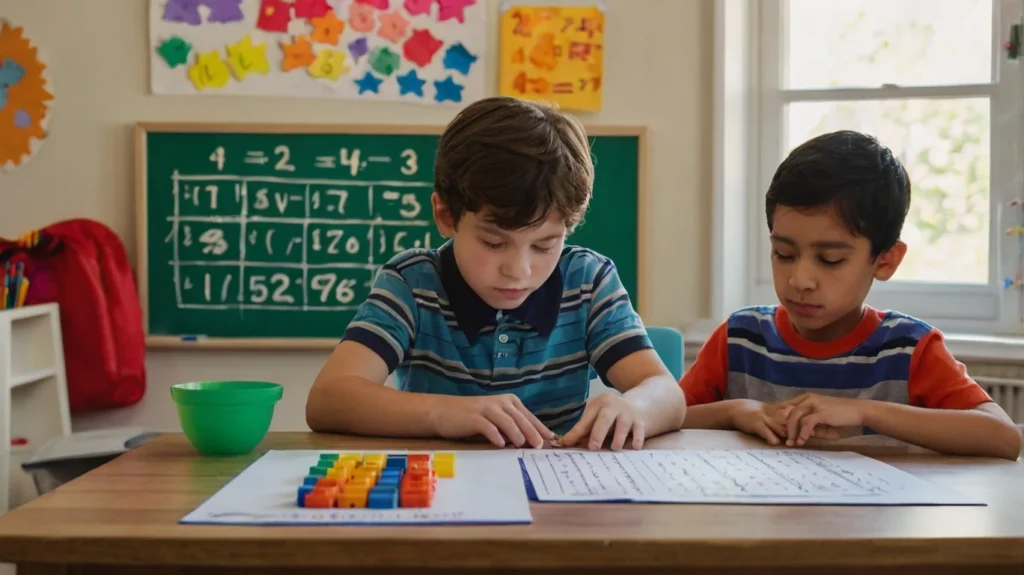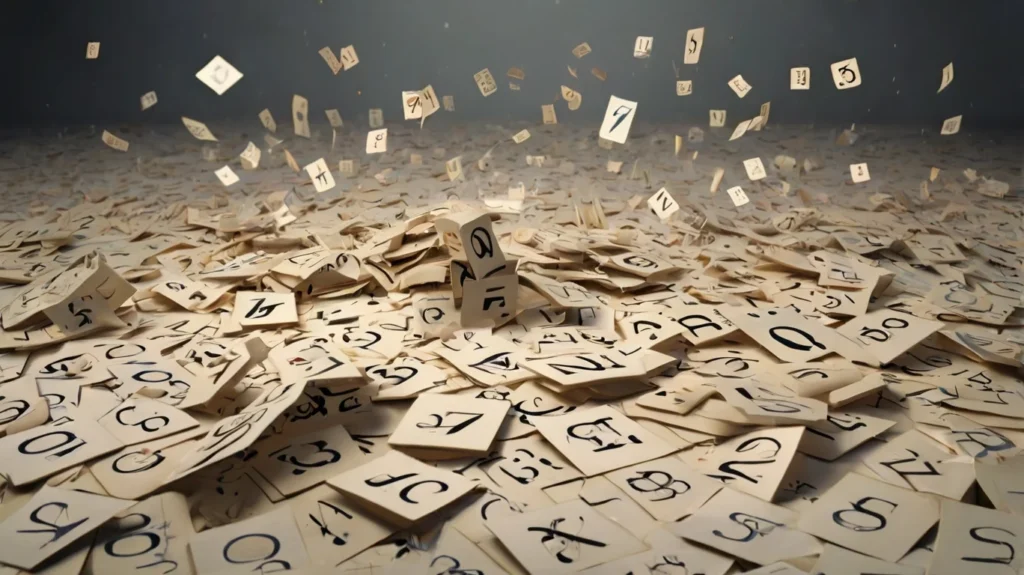Understanding Mathematical Learning Challenges in Children: A Cognitive Exploration of Dyscalculia
Table of Contents
Mathematics is often seen as a universal language—logical, consistent, and a crucial part of daily life. Yet, for many children, learning math is not just difficult but deeply frustrating, leading to confusion and stress. This struggle can be attributed to a lesser-known learning disability called dyscalculia. Affecting approximately 5-7% of the population, dyscalculia involves specific challenges in understanding numerical concepts and performing math-related tasks.
While dyscalculia may not be as widely recognized as its linguistic counterpart, dyslexia, its impact on children’s academic performance and overall confidence is just as significant. This article delves into the cognitive roots of dyscalculia in children, examines current research, and offers insights into identifying and supporting children with this condition.

What is Dyscalculia?
Dyscalculia refers to a learning disability that primarily affects a child’s ability to grasp and work with numbers. Children with this condition often find it difficult to understand basic arithmetic, number sense, and mathematical reasoning. It’s important to note that this challenge is not due to lack of effort, laziness, or general intellectual capability. Rather, it stems from differences in brain function, particularly in areas related to numerical cognition.
Cognitive Basis of Mathematical Challenges
Research into learning disabilities often intersects with cognitive science, as our brains are responsible for processing and interpreting information from the world around us. Dyscalculia, like other specific learning disabilities, arises from difficulties in how the brain processes numbers and mathematical concepts.
Key cognitive processes affected by dyscalculia include:
- Number Sense: Children with dyscalculia struggle to understand the basic concept of numbers. For example, they might find it hard to differentiate between larger and smaller quantities or understand that a number like “5” represents five distinct units.
- Working Memory: Memory plays a crucial role in math, especially when performing multi-step operations like addition or subtraction. Children with dyscalculia often have difficulties holding numbers in their minds while performing calculations, leading to frequent mistakes.
- Visual-Spatial Processing: Dyscalculia can impact a child’s ability to interpret visual information, such as understanding how numbers are arranged in space. This can make tasks like aligning numbers for addition or understanding graphs particularly challenging.
- Symbolic Processing: Children with dyscalculia may find it difficult to connect abstract symbols (such as numerals) with their real-world meanings. For example, they might not grasp that “4” represents the quantity of four objects.

Symptoms of Dyscalculia in Children
Identifying dyscalculia in children is crucial for providing timely intervention. Early signs of the condition can appear as early as preschool and kindergarten. However, because every child develops at a unique pace, it’s important to distinguish between typical early struggles and more persistent difficulties. Here are some common indicators of dyscalculia:
| Age Group | Symptoms |
| Preschool | Difficulty learning to count; trouble recognizing numbers. |
| Early Elementary | Inability to grasp basic number concepts; frequent miscounting. |
| Late Elementary | Trouble with multiplication tables; difficulty with simple mental arithmetic. |
| Middle School | Struggling with fractions, percentages, or understanding word problems. |
| High School | Ongoing challenges with algebra, geometry, and higher-level math. |
It’s important to note that dyscalculia is not just about being “bad at math.” It is a consistent and noticeable struggle with numerical tasks that persist over time despite adequate instruction.
Causes of Dyscalculia: A Look at the Brain
Cognitive neuroscience has shed light on the biological underpinnings of dyscalculia. Neuroimaging studies have identified certain areas of the brain that are typically underactive in individuals with this condition. The parietal lobes, specifically the intraparietal sulcus, play a key role in mathematical cognition. Dysfunctions in this region are associated with difficulties in basic number processing and numerical reasoning.
Other brain regions, such as the frontal lobes and the prefrontal cortex, are involved in attention and working memory. Deficits in these areas can make it difficult for children to concentrate on math tasks or hold numbers in mind while solving problems.
Additionally, some research suggests a genetic component to dyscalculia. A family history of learning disabilities increases the likelihood that a child will also experience learning challenges, including math-related difficulties.
The Impact of Dyscalculia on Academic Performance
Children with dyscalculia often struggle to keep pace with their peers in mathematics, which can lead to frustration, embarrassment, and a decline in self-esteem. The condition’s impact extends beyond math class—it can affect performance in subjects that require mathematical reasoning, such as science and economics.
However, dyscalculia’s influence is not limited to academic performance. Children may also experience difficulties in real-world tasks, such as telling time, managing money, or measuring ingredients in a recipe.
Table: Academic and Real-World Challenges
| Academic Challenges | Real-World Challenges |
| Difficulty solving arithmetic problems | Trouble managing finances or making change |
| Struggling to understand word problems | Difficulty telling time on analog clocks |
| Slow progress in learning multiplication | Problems with measuring ingredients in cooking |
| Trouble with fractions, percentages, or decimals | Confusion with directions, distances, or maps |

Strategies for Supporting Children with Dyscalculia
Once dyscalculia has been identified, tailored interventions and strategies can help children manage the condition and improve their mathematical abilities. These interventions often rely on a multi-sensory approach to learning, which engages different senses to reinforce understanding.
- Use of Visual Aids: Visual representations like number lines, graphs, and color-coded blocks can help children visualize mathematical concepts. This allows them to make sense of abstract numbers in a concrete way.
- Hands-On Learning: Manipulatives, such as counting blocks or beads, provide children with tactile experiences that help strengthen their number sense. By physically manipulating objects, they can better understand numerical relationships.
- Math Software and Games: Interactive math programs designed for children with dyscalculia can provide engaging and personalized practice. Many of these tools focus on building foundational math skills through repetition and incremental challenges.
- Regular Feedback and Reinforcement: Encouragement and positive reinforcement are critical for boosting a child’s confidence. Providing immediate feedback on correct answers can help children recognize patterns and improve their problem-solving strategies.
- Accommodations in the Classroom: Children with dyscalculia often benefit from modified assessments, extended time on tests, or the use of calculators. These accommodations ensure they are assessed on their conceptual understanding rather than their ability to quickly perform calculations.
FAQ: Frequently Asked Questions
Q1: How is dyscalculia diagnosed?
A: Dyscalculia is diagnosed through a comprehensive evaluation that includes cognitive testing, a review of academic history, and interviews with parents and teachers. Specialized psychologists or educational specialists administer these assessments, which help identify specific areas of difficulty.
Q2: Is dyscalculia the same as math anxiety?
A: While math anxiety can lead to avoidance of math tasks and poor performance, it is not the same as dyscalculia. Math anxiety stems from emotional responses to math, whereas dyscalculia is a cognitive disorder that affects how the brain processes numbers. However, children with dyscalculia may develop math anxiety over time due to repeated failures.
Q3: Can dyscalculia be treated?
A: While dyscalculia cannot be “cured,” early intervention can help children manage their symptoms and develop better mathematical skills. With appropriate support, many children with dyscalculia can make significant progress.
Q4: Can children with dyscalculia succeed in school?
A: Yes, children with dyscalculia can succeed academically with the right interventions and accommodations. It’s essential to provide a supportive learning environment that acknowledges their unique challenges and helps them build confidence in their abilities.
Q5: Is dyscalculia related to other learning disabilities?
A: Dyscalculia often coexists with other learning disabilities, such as dyslexia or attention deficit hyperactivity disorder (ADHD). It’s important to conduct a thorough assessment to identify all potential learning challenges a child may be facing.
Conclusion: Building a Supportive Environment
Dyscalculia is a lifelong condition, but with the right tools and support, children with this learning disability can improve their math skills and confidence. Early identification and targeted interventions are crucial to preventing long-term academic struggles and emotional distress.
Parents, educators, and specialists play a key role in fostering an environment where children feel encouraged and supported in their mathematical journey. By understanding the cognitive roots of dyscalculia and implementing effective teaching strategies, we can ensure that children with this condition have the opportunity to reach their full potential.
References
- Butterworth, B., Varma, S., & Laurillard, D. (2011). Dyscalculia: From brain to education. Science, 332(6033), 1049-1053.
- Price, G. R., Holloway, I., Räsänen, P., Vesterinen, M., & Ansari, D. (2007). Impaired parietal magnitude processing in developmental dyscalculia. Current Biology, 17(24), R1042-R1043.
- Ashkenazi, S., & Henik, A. (2010). A dissociation between physical and mental number bisection tasks in developmental dyscalculia. Journal of Experimental Child Psychology, 105(4), 298-307.
- Shalev, R. S., Manor, O., & Gross-Tsur, V. (2005). Developmental dyscalculia: A prospective six-year follow-up. Developmental Medicine & Child Neurology, 47(2), 121-125.
- Kaufmann, L., Vogel, S. E., Starke, M., Kremser, C., & Schocke, M. (2009). Numerical and non-numerical magnitude processing in children with and without developmental dyscalculia: Evidence from fMRI. NeuroImage, 47(4), 2040-2051.







